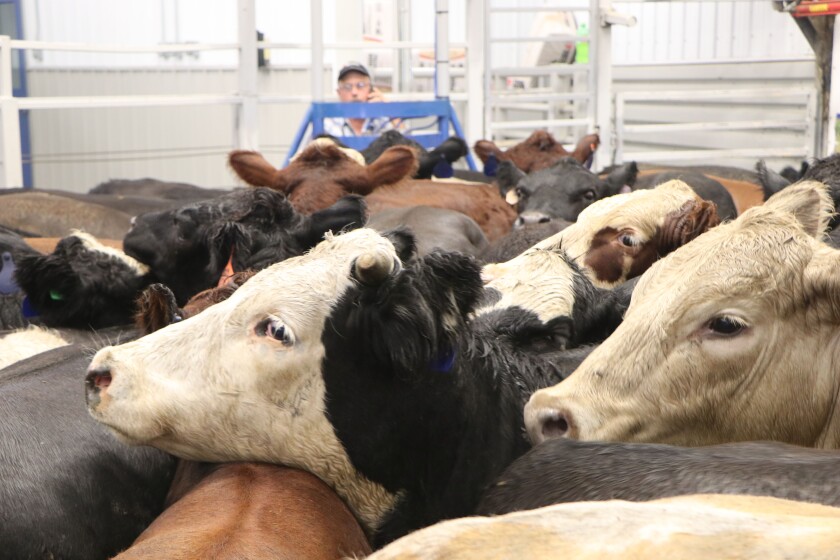Encourage Your Service: Bagley Risk Management Insights
Encourage Your Service: Bagley Risk Management Insights
Blog Article
Comprehending Animals Danger Security (LRP) Insurance: A Comprehensive Guide
Navigating the realm of animals danger security (LRP) insurance coverage can be a complex endeavor for lots of in the farming field. From just how LRP insurance functions to the different insurance coverage alternatives available, there is much to uncover in this extensive overview that might possibly shape the method animals manufacturers come close to risk administration in their businesses.

How LRP Insurance Functions
Occasionally, recognizing the technicians of Animals Danger Security (LRP) insurance can be intricate, however breaking down just how it works can provide quality for farmers and breeders. LRP insurance policy is a risk management device created to safeguard animals manufacturers against unanticipated price declines. The plan allows producers to establish an insurance coverage degree based on their details demands, choosing the number of head, weight array, and protection price. As soon as the policy remains in location, if market rates fall below the insurance coverage rate, producers can sue for the distinction. It's vital to keep in mind that LRP insurance policy is not an earnings guarantee; instead, it concentrates entirely on rate risk security. The coverage period generally varies from 13 to 52 weeks, supplying flexibility for manufacturers to choose a duration that aligns with their manufacturing cycle. By utilizing LRP insurance policy, farmers and breeders can mitigate the monetary risks connected with varying market value, making sure greater stability in their operations.
Eligibility and Protection Options

When it comes to protection alternatives, LRP insurance provides manufacturers the versatility to pick the coverage level, insurance coverage duration, and endorsements that finest match their risk management requirements. Insurance coverage levels commonly range from 70% to 100% of the expected finishing value of the insured livestock. Producers can additionally select coverage durations that align with their production cycle, whether they are insuring feeder cattle, fed livestock, swine, or lamb. Recommendations such as price threat protection can additionally personalize insurance coverage to shield against adverse market fluctuations. By comprehending the qualification standards and insurance coverage alternatives available, livestock producers can make educated choices to take care of danger properly.
Pros and Disadvantages of LRP Insurance Policy
When reviewing Livestock Risk Defense (LRP) insurance policy, it is crucial for livestock manufacturers to consider the disadvantages and benefits intrinsic in this danger administration tool.

One of the primary benefits of LRP insurance is its capacity to give security versus a decrease in animals prices. This can assist guard producers from monetary losses arising from market variations. Additionally, LRP insurance policy uses a degree of flexibility, enabling manufacturers to customize insurance coverage levels and policy durations to fit their particular requirements. By securing in a guaranteed rate for their animals, producers can better handle threat and prepare for the future.
One restriction of LRP insurance policy is that it does not secure against all kinds of dangers, such as disease outbreaks or all-natural catastrophes. It is critical for manufacturers to meticulously examine their private threat direct exposure and monetary situation to determine if LRP insurance policy is the ideal risk administration tool for their procedure.
Comprehending LRP Insurance Premiums

Tips for Maximizing LRP Advantages
Making best use of the benefits of Livestock Threat Security (LRP) insurance coverage calls for strategic planning and positive threat management - Bagley Risk Management. To make the most of your LRP protection, consider the complying with suggestions:
On A Regular Basis Analyze Market Conditions: Stay informed regarding market patterns and rate variations in the animals industry. By keeping an eye on these factors, you can make educated choices concerning when to purchase LRP coverage to safeguard against prospective losses.
Set click here for more Realistic Insurance Coverage Degrees: When choosing protection levels, consider your production expenses, market worth of animals, and potential dangers - Bagley Risk Management. Establishing sensible insurance coverage levels makes sure that you are properly protected without paying too much for unneeded insurance policy
Diversify Your Insurance Coverage: As opposed to visit homepage depending solely on LRP insurance, consider expanding your threat management strategies. Combining LRP with other risk management devices such as futures agreements or options can offer extensive coverage against market unpredictabilities.
Review and Adjust Protection Consistently: As market problems change, periodically evaluate your LRP protection to guarantee it lines up with your current threat direct exposure. Readjusting coverage degrees and timing of acquisitions can help maximize your danger protection strategy. By complying with these suggestions, you can maximize the advantages of LRP insurance policy and protect your livestock procedure against unanticipated risks.
Conclusion
In verdict, animals risk security (LRP) insurance is an important tool for farmers to manage the economic risks connected with their livestock operations. By understanding how LRP works, qualification and insurance coverage options, as well as the advantages and disadvantages of this insurance coverage, farmers can make informed decisions to shield their source of incomes. By carefully taking into consideration LRP costs and implementing methods to optimize benefits, farmers can alleviate prospective losses and make certain the sustainability of their procedures.
Livestock producers interested in acquiring Animals Risk Defense (LRP) insurance can discover a range of eligibility requirements and insurance coverage options tailored to their details animals procedures.When it comes to coverage options, LRP insurance policy offers producers the versatility to pick the coverage level, protection duration, and website here recommendations that ideal match their danger administration requirements.To comprehend the intricacies of Livestock Danger Protection (LRP) insurance completely, recognizing the aspects influencing LRP insurance policy costs is critical. LRP insurance policy premiums are identified by different aspects, including the protection degree selected, the anticipated price of animals at the end of the protection period, the kind of animals being insured, and the size of the protection period.Evaluation and Change Coverage Frequently: As market conditions alter, periodically assess your LRP protection to guarantee it lines up with your current threat exposure.
Report this page